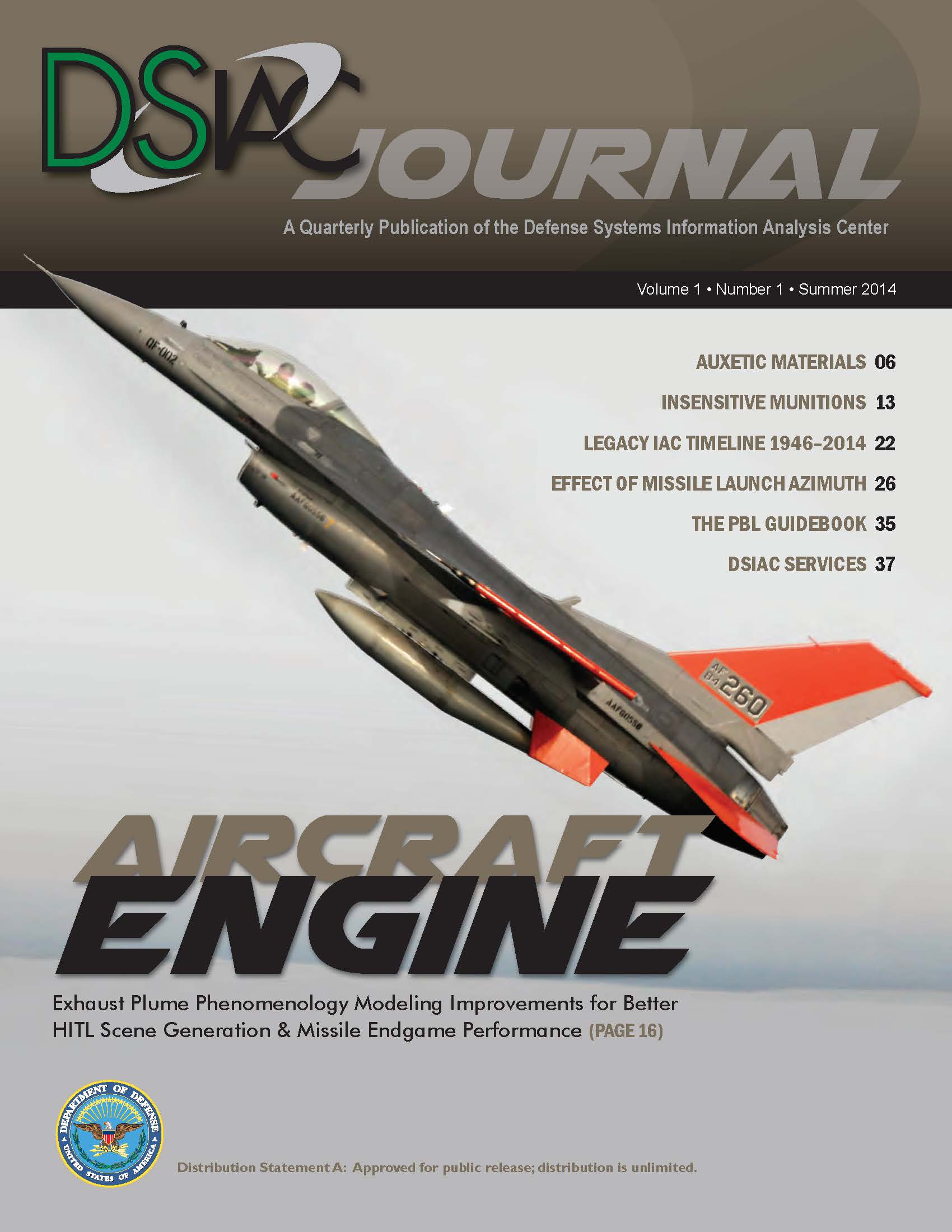an email newsletter released every month highlighting the latest articles, events, technical inquires, and voices from the community
Summer 2014: Volume 1 Number 1

Summer 2014: Volume 1 Number 1
Published: September 1, 2014
We are pleased to introduce the Defense Systems Information Analysis Center (DSIAC) and the inaugural issue of the quarterly DSIAC Journal. This inaugural issue is being widely distributed in both print and electronic form to provide the latest information about the new DSIAC and to serve as a ready reference for accessing its products and services, most importantly the free Technical Inquiry (TI) service (further described on page 37 ). Current and future issues of the DSIAC Journal can be found at www.dsiac.org. The launch of DSIAC on 1 January 2014 marks a major milestone in the history of the Information Analysis Center (IAC) program— the final step in the Department of Defense’s (DoD’s) implementation of the “Better Buying Power” initiative to reshape the IACs and establish three consolidated Basic Centers of Operation (BCOs) in Cyber Security & Information Systems, Homeland Defense, and Defense Systems. This transformation better aligns the IAC program with the contemporary budget environment and positions the IACs to effectively meet the emerging needs of their respective technical communities by
- Aligning IAC focus to match the top priorities of the Secretary of Defense
- Increasing synergy across related technology areas
- Increasing opportunities for small business
- Lowering cost and improving quality through enhanced competition, and
- Expanding the industrial base accessible through the IACs
From the creation of the first DoD-sponsored IAC in December 1946 until today, IACs have served as a critical value-added resource to improve productivity and reduce redundancy in DoD research and engineering efforts. IACs connect engineers and scientists with the vast repository of DoD scientific and technical information (STI) to fully exploit the knowledge base and benefit the greater DoD community. The long and rich IAC heritage that has led to today’s DSIAC is illustrated on page 22.
The transition of the core operations of the six legacy IACs (AMMTIAC, CPIAC, RIAC, SENSIAC, SURVIAC, and WSTIAC) was completed on 27 June 2014, when DSIAC assumed full responsibility for their respective technical scope areas. Further, DSIAC is responsible for supporting three new areas: Autonomous Systems, Directed Energy, and Non-Lethal Weapons. To accomplish this broad mission, DSIAC is establishing nine distinct Communities of Practice, which will foster communication and collaboration and help DSIAC users to focus on their particular areas of interest. One core function of DSIAC is to acquire, organize, catalog, and disseminate STI. Accordingly, we seek reports, papers, data, and other formal documentation (classified or unclassified) for permanent indexing and cataloging in the Defense Technical Information Center (DTIC) digital Research & Engineering (R&E) Gateway. Please contact DSIAC if you are aware of orphaned or otherwise uncataloged technical reports or collections that deserve to be indexed and permanently archived for future use by the greater DoD technical community. Likewise, a key objective of the DSIAC transition philosophy has been to capture the best practices of each IAC and provide the most seamless transition possible for the six legacy technical communities. We applaud the legacy IAC operators—Alion Science and Technology, The Johns Hopkins University (JHU), Wyle Laboratories, the Georgia Tech Research Institute (GTRI), and Booz Allen Hamilton—for their longstanding contributions to the IAC program and thank them for their support in the transition to the new DSIAC. In conclusion, DSIAC is extremely pleased to join the Cyber Security and Information Systems Information Analysis Center (CSIAC) and the Homeland Defense and Security Information Analysis Center (HDIAC) as the next generation of DoD IACs. The partnership, experience, and resources of the DoD IAC Enterprise team stand ready to help address the challenges and needs of the U.S. Government, the DoD, and the industrial complex. Whether you are part of a legacy IAC technical community, are interested in any of our new scope areas, have a question, or require more substantial technical support, DSIAC looks forward to hearing from you.

